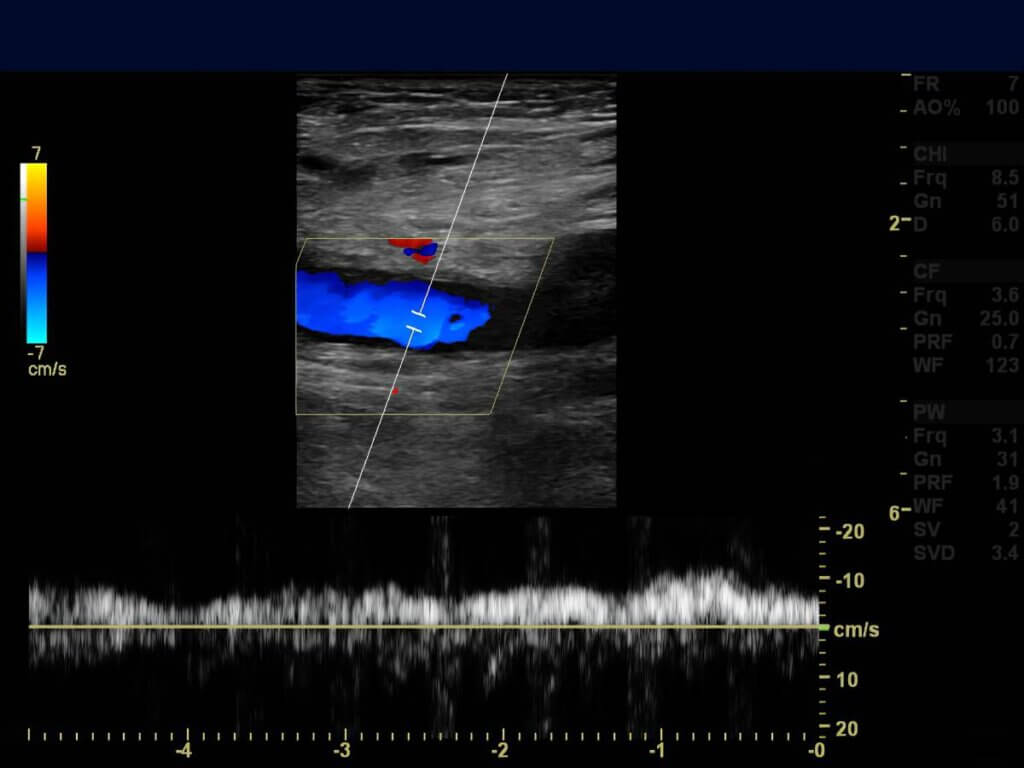
Deep vein thrombosis (DVT) is a serious medical condition that occurs when a blood clot forms in a deep vein [1]. It typically involves the lower limb veins, such as the popliteal (16%), femoral (20%), common femoral (20%), and iliac veins (4%) [1]. Although deep vein thrombosis can happen to anyone, surgical patients are particularly susceptible due to various factors associated with surgery [1]. Understanding the risks and implementing preventive measures is essential to ensure patient safety during and after surgery.
Surgery is an established cause for the development of deep vein thrombosis[1]. The immobility during and after surgery can cause blood to pool in the veins, increasing the likelihood of clot formation [1,2]. Cardiac surgery is associated with prolonged immobility, as patients often have lengthy preoperative and postoperative hospital length of stays [3]. In these surgeries, the risk of DVT is noted to be significant at 1.62% [3]. Moreover, major surgeries, like orthopedic procedures, can lead to blood vessel damage, triggering the clotting cascade much like a traumatic injury does [4]. A 2020 study in the Journal of Orthopedic Surgery reported that the rate of postoperative DVT is as high as 56% of patients undergoing surgery for femoral neck fracture, up from 32% preoperatively [4].
Since up to 80% of patients who experience a DVT have at least one risk factor, identifying patients at higher risk of developing DVT is crucial in preventing its occurrence [5]. Some factors that are associated with an increased chance of developing a DVT are age, race, obesity, smoking, a history of DVT, and the presence of certain genetic factors and comorbidities [5,6]. Additionally, malignancy and pregnancy increase the risk of DVT [5]. It is essential for healthcare professionals to thoroughly assess a patient’s medical history and individual risk factors prior to surgery to implement appropriate preventive measures if they are at high risk of deep vein thrombosis.
Fortunately, there are several preventive measures that can significantly reduce the risk of DVT in surgical patients [6]. One of the most effective approaches is the use of anticoagulant medications [6]. Pharmacologic prevention of DVT in patients undergoing general, gynecologic, vascular, and major urologic surgery typically consists of low-dose unfractionated heparin or low-molecular-weight heparin (LMWH) [6]. For higher risk procedures, like orthopedic procedures, vitamin K antagonists, LMHW, or fondaparinux are recommended [6].
Early mobilization is another key preventive measure [7]. Encouraging patients to move their legs and perform simple exercises as soon as possible after surgery can improve blood circulation and reduce the likelihood of clot formation [7]. It is recommended that patients should attempt to get out of bed and walk at least three times a day [7]. In cases where patients may have limited mobility after surgery, the use of sequential compression devices can help stimulate blood flow in the legs and prevent clots [6,7].
Apart from medical interventions, patient education plays a vital role in preventing and identifying DVT [6]. Patients should be made aware of the risks associated with surgery and deep vein thrombosis and be actively involved in their own care. Understanding the symptoms of SVT, such as swelling, tenderness, pain, and increased warmth of skin, can prompt early detection and treatment [6].
References
- Waheed, S., Kudaravalli, P., & Hotwagner, D. (2018). Deep vein thrombosis. StatPearls [Internet].
- Sartori, M., Favaretto, E., & Cosmi, B. (2021). Relevance of immobility as a risk factor for symptomatic proximal and isolated distal deep vein thrombosis in acutely ill medical inpatients. Vascular Medicine, 26(5), 542-548.
- Khoury, H., Lyons, R., Sanaiha, Y., Rudasill, S., Shemin, R., & Benharash, P. (2020). Deep venous thrombosis and pulmonary embolism in cardiac surgical patients. The Annals of Thoracic Surgery, 109(6), 1804-1810.
- Fu, Y., Liu, P., Xu, X. et al. (2020). Deep vein thrombosis in the lower extremities after femoral neck fracture: a retrospective observational study. Journal of Orthopedic Surgery, 28(1).
- McLendon, K., Goyal, A., & Attia, M. (2017). Deep venous thrombosis risk factors. StatPearls [Internet].
- Agnelli, G. (2004). Prevention of venous thromboembolism in surgical patients. Circulation, 110, IV-4.
- Kreutzer, L., Minami, C., & Yang, A. (2016). Preventing venous thromboembolism after surgery. JAMA, 315(19), 2136-2136.



